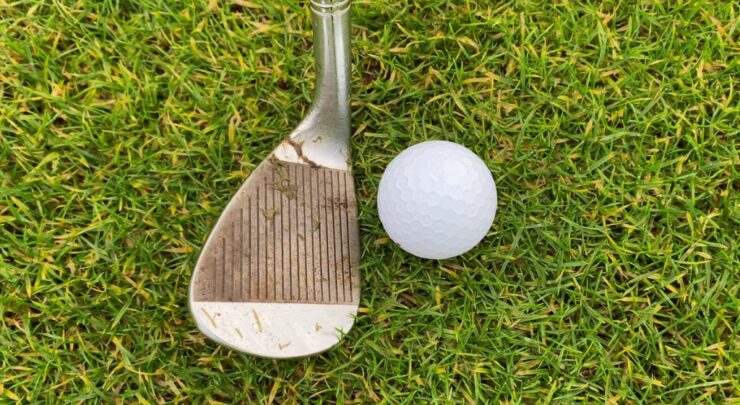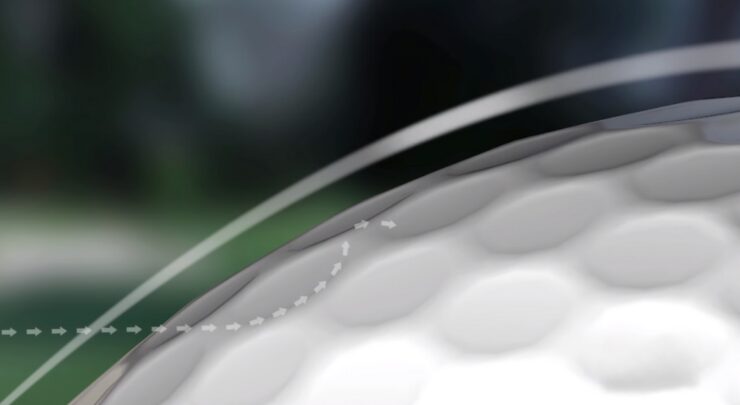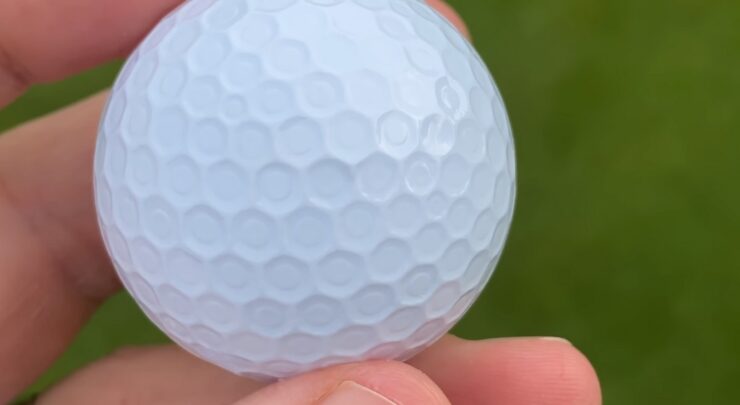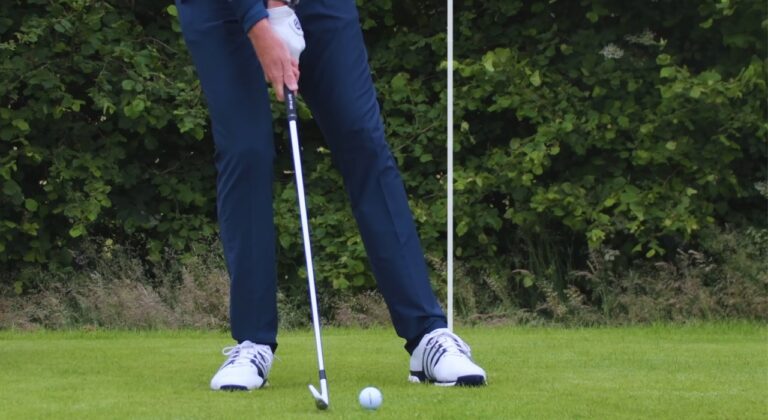When it comes to sports people are usually focused on the athletes and less so on the equipment. Talking of golf, the equipment used is more important than in so many other sports. The focus today, for us, is going to be on the golf balls. These balls are like no other, specially engineered to make this game what it is today.
What fascinates the onlookers when they think of golf balls are their dimples. While they might appear random, they’re most certainly not. We’re talking about a precise, scientific decision, to have these dimples right where they are. Let’s see the reasoning behind it.
Where It All Started

Golf dates back some time. The first golf balls were made out of leather pouches. They were given the name featheries due to the wet feathers they were stuffed with. They got their shape from the hardened leather which became harder and harder the more feathers got drier.
The next iteration came our way in the 19th century when the first full-rubber balls for golf were invented. They were quite popular mostly due to their durability and game performances. What followed were different balata and synthetic balls.
Today, we don’t only have new, more modern, durable, and aesthetic materials, we also have the aerodynamic touch added with their dimples.
Understanding the science behind your golf swing involves not only the intricacies of golf ball dimples but also knowing the essential gear inside a golfer’s bag, as discussed in the related article.
Why do Aerodynamics Matter?
It is quite simple and logical. A golf ball is a flying object; thus, aerodynamics is paramount. When we talk about these balls the focus needs to be on the spin, drag, and lift, all of which are used to determine its flying trajectory.
A dimpled ball moves significantly differently through the air than a smooth one would. Thanks to the use of dimples, a modern golf ball guarantees optimized flight. The golf players of today, such as Tiger Woods are used to these characteristics.
The Core of Golf Balls Dimples
The golf ball dimples are found all across the golfing globe, and they are smallish dents that make the golf ball what is today. For many people, these dimples are not important, and they serve only a decorative purpose. Professionals at Swingyard know better.
After years of scientific research and focus they have been altered to look as they do today. The patterns and size of the dimples can vary, altering the ball’s aerodynamic properties. They can be either circular or hexagonal, and they can be quite deep or barely shallow.
All of it matters even more when seen through the prism of the Bernoulli Principle. That’s right, the core of the fluid dynamics plays a role in the aerodynamic properties of a golf ball and it affects its flight. The principle in question states that the pressure of fluid will decrease as its velocity increases.
Thanks to the dimples, golf balls are always in a zone of low pressure. As you can understand now, thanks to the dimples, golf balls can remain in the air for prolonged periods, thus having optimized flight and trajectory.
Lift, Backspin, and Reduced Drag

In terms of what golf players can do with this ball, wonders are not possible. They too adhere to the principles of aerodynamics. This is why a golf ball will have backspin which will vary depending on the club’s angle on the contact.
Thanks to the dimples the backspin is magnified and the consequence of it is the lift. So, when hit by a professional golfer, under the right club angle, a golf ball will receive a lot of backpins, followed by a lift, which will optimize its flight and allow it to fly longer distances.
Another aerodynamic property of a ball that is influenced by the dimples is the drag. The dimples do a great job of reducing it. When a used ball is smooth, the air will cling to the surface easier compared to a dimpled ball.
The consequence of it is more drag. Golf ball dimples do an amazing job of reducing the amount of air that clings, making it easier to fly higher and longer.
Golf Brands and Different Dimple Patterns
As we already mentioned, not all golf balls are created the same. Manufacturers and scientists alike still experiment in this domain. Because of this, we have different dimple designs and properties.
Manufacturers, among them, often discuss and argue whose balls have better dimples, and are more aerodynamically applicable to the sport of golf. If you delve deeper into the world of golf balls and dimples you will quickly learn which brands provide the balls with more spin, while others are more suitable for covering longer distances.
As you can probably guess, some of them aim at finding the perfect balance between both points. Your personal choice depends on the type of game you want to nurture. For example, the brand that dominated the latest Augusta National was Titleist.
Weather vs. Golf Ball’s Dimples
Golf is a game that is mostly played under fair weather. But that doesn’t have to be the case all the time. Whether you’re playing in the sun, or a slight breeze, you need to know that golf balls are influenced by the most natural factors of all, wind, followed by humidity, and of course temperature.
All of these factors influence the flight of the ball. This is where the magic of dimples steps in. Golf balls, thanks to their dimples, aid golfers in maintaining their game regardless of the weather conditions.
Furthermore, some players are known to use customized balls. Thanks to the usage of dimples, golf balls can be altered so that they suit both the weather and individual play style.
What The Future Holds?

By now, you can see that both the game of golf and golf ball design have changed substantially over the years. In the future, we can expect even more changes as both science and technology advance.
Today, more than ever we have access to modern and more durable materials. In the domain of golf, we have even talked about smart balls, golf balls equipped with sensors, and even multi-layered balls.
Bottom Line
Looking at the sport of golf as a laic, one could miss all the intricacies surrounding the golf balls and their dimples. After reading this article, you now know better. The world of golf and golf balls is ever-evolving, and we can expect more changes coming our way in years to come.















